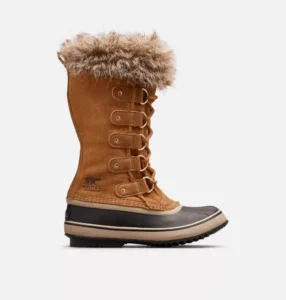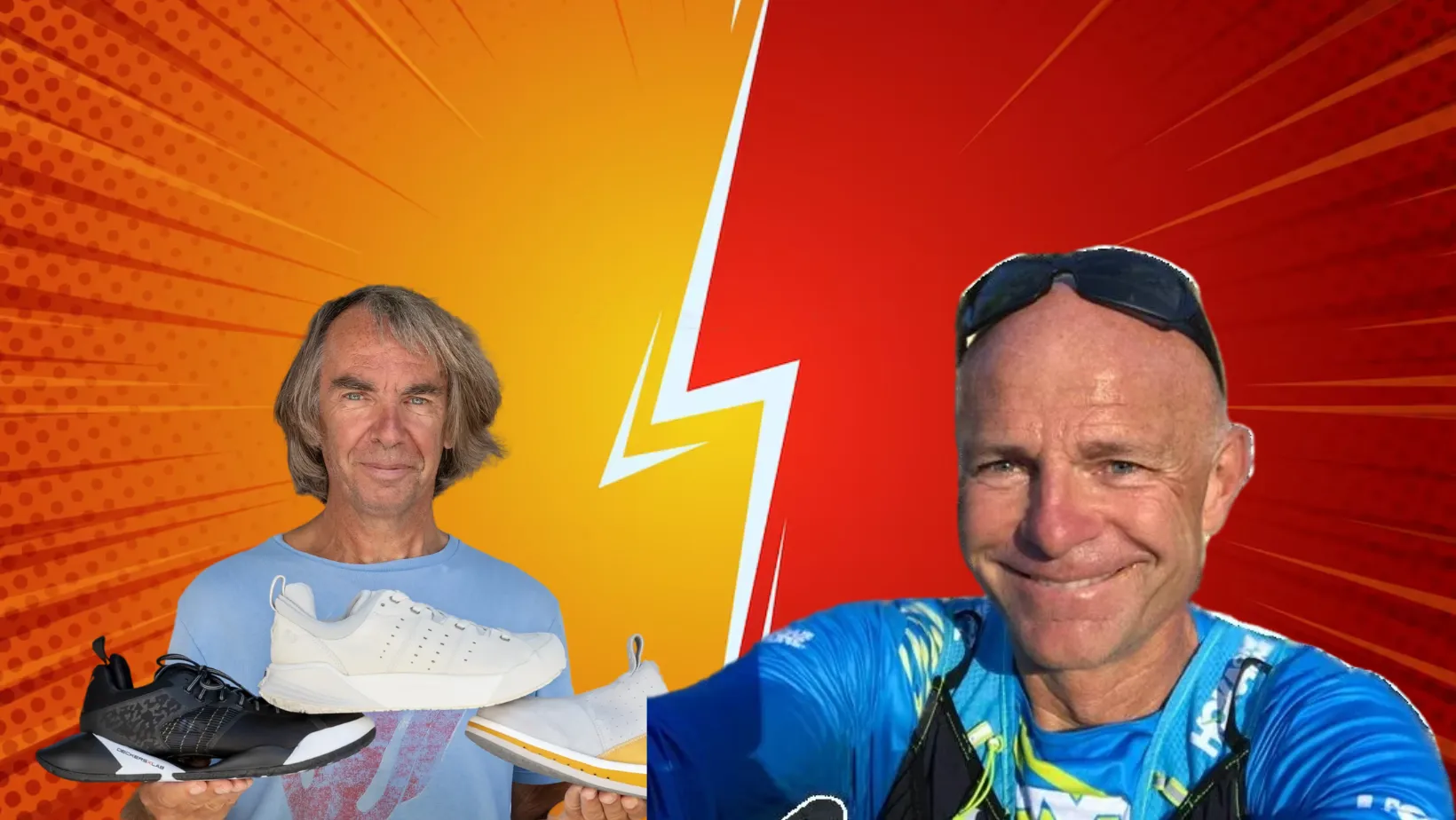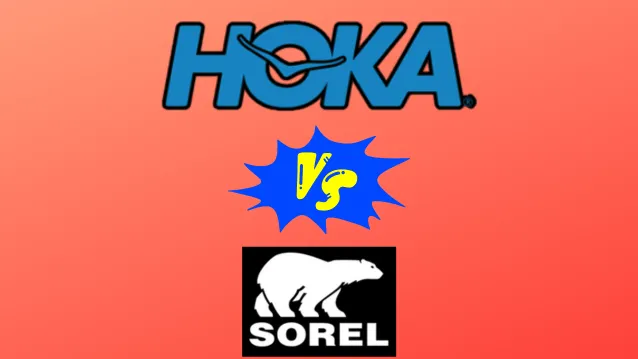When researching performance footwear, Sorel and Hoka stand out for crafting comfortable shoes tailored to unique needs.
Sorel conquers icy terrains with weatherproof insulation and traction. Hoka cushions endless pavement miles with their pillow-like foam midsoles.
This in-depth comparison will highlight the key differences between Sorel and Hoka across factors like intended environment, technologies, and style so you can determine the best option based on your lifestyle and priorities.
Comparison Table Between Sorel And Hoka:
| Features | Sorel | Hoka |
|---|---|---|
| Founded In | 1962 | 2009 |
| Comfort & Fit | Supportive, insulating fit | Roomy toe box, plush cushioning |
| Color Options | Neutral tones and pops of color | Wide range of bright colors and prints |
| Durability | Durable, weatherproof materials | Durable foam cushioning |
| Performance | Traction for ice, snow, rain | Cushioned feel for road running |
| Design & Style | Rugged, chic winter aesthetic | Distinctively rounded, thick shape |
| Popularity | Well-known for winter footwear | Very popular among runners |
| Top Model | Joan of Arctic | Bondi 8 |
Sorel Overview:
Founded in 1962 by Jacob Ratz Kaufman, Sorel is renowned for durable, weatherproof footwear. The brand focuses on insulation and traction technologies to conquer the elements while showcasing sleek style.
Sorel incorporates a seam-sealed waterproof construction with removable felt liners to seal out moisture while retaining heat.
The molded rubber shells with traction lugs provide stability on slippery surfaces. A cushioned EVA midsole offers comfort during lengthy wear.
One of their best seller the Joan of Arctic boot delivers the classic Sorel look with durable leather and textile upper.

The faux fur collar keeps snow out while adding a chic accent. While designed to perform in frigid conditions, the flattering silhouette works in city streets.
For those who live in cold winter climates or spend ample time outdoors in the elements, Sorel offers both functionality to power through weather and versatile styling.
While not designed for running, the weatherproofing and traction excel at keeping you moving in snow, rain, and ice.
Hoka Overview:
Founded in 2009 by Nicolas Mermoud and Jean-Luc Diard, Hoka One One burst onto the scene with their super thick midsoles, aiming to provide maximum cushioning for runners.

Initially, their oversized design was polarizing. But as more runners experienced the plush ride, Hoka gained a cult following among ultramarathoners and trail runners.
Hoka remains focused on cushioning and stability to create a smooth, comfortable run. Signature technologies like the Meta-Rocker outsole encourage a natural gait cycle and transition. The roomy toe box allows your feet to splay and relax over long miles.
For runners who struggle with joint pain and hard impact, Hoka’s pillow-like foam brings sweet relief. The soft landings and energetic rebound make each stride feel effortless. It’s easy to see why Hokas have a reputation for comfort.
Hokas aren’t the most flexible shoe due to the higher platform. And the bulky silhouette isn’t for everyone. But for runners craving a cushy feel, Hoka delivers plush shoes that can go the distance in blissful comfort.
Major Differences Between The Brands:
Till now we have seen some history behind both brands. Let’s now understand how both brands compare in different important segments.
1) Comfort and Fit
Comfort and fit are extremely important before making that final decision. With that said Sorel offers a roomy, insulating fit tailored for cold-weather comfort. Hoka features a wider toe box and plush cushioning that adapts as feet swell.
Sorel has more weatherproofing and insulation for retaining warmth. Hoka excels at continuous cushioning on long runs.
Also Check Out: Kuru VS Hoka: Which Is Better?
2) Durability and Performance
Sorel shoes withstand harsh winter elements thanks to waterproof leather and rubber shells. The deep traction lugs grip icy, slippery terrain. The EVA foam midsole provides stability and comfort for lengthy wear.
Hoka’s cushioning stands up to hundreds of miles of road running with minimal compression or wear. However, Sorel wins for insulation and traction in extreme conditions while Hoka takes the prize for responsive cushioning during road mileage.
Also Check Out: Clove VS Hoka: Which Is Better?
3) Price
Sorel boots typically range from $120-$200 to account for high-performing weatherproof materials and traction technology. The average Hoka costs $140-$250 for their proprietary cushioning foam.
Both come at a premium but for different reasons. Unless you specifically need insulation or soft cushioning, more affordable options exist.
Also Check Out: Oofos VS Hoka: Which Is Better?
4) Design and Style
Sorel offers an urban chic look with weatherproofing features like faux fur trim and contrasting stitching. Hokas make a dramatic statement with their radically oversized midsole in bold colors.
For an understated winter style that can still handle blizzard conditions, Sorel is unmatched. If you love the attention-grabbing Hoka silhouette, its unique shape will excite you.
Also Check Out: Allbirds VS Hoka: Which Is Better For You?
5) Popularity
As a longstanding winter footwear brand, Sorel enjoys strong popularity in cold climates. Hoka exploded onto the running scene just over a decade ago, becoming the “it” shoe for maximal cushioning.
In terms of widespread popularity, Hoka likely edges out Sorel. But Sorel dominates the winter weather market.
Also Check Out: Hoka VS Mizuno: Which Is Better?
6) Target Market
Sorel footwear targets men and women in cold, wet climates who spend ample time outdoors or want chic aprés-ski style.
Hoka caters explicitly to runners seeking plush cushioning for marathon training and logging high weekly mileage.
Final Verdict:
In the battle of Sorel versus Hoka, neither universally outperforms the other. The right choice depends entirely on lifestyle factors and priorities.
If you regularly confront frigid temperatures and slippery terrain, Sorel dominates for weatherproofing insulation and traction technology. However, Sorel shoes lack the responsive cushioning that high-mileage road runners require.
That’s where Hokas win out with their shock-absorbing midsole foam that keeps legs fresher across endless pavement miles. While Hokas aren’t built for the elements, their marshmallow-like comfort is hard to resist.
Determine if warm, dry feet in winter or continuous cushioning for training is most vital before choosing between these two outstanding brands. Select the shoe specifically engineered to match performance features with your personal needs and environment.


